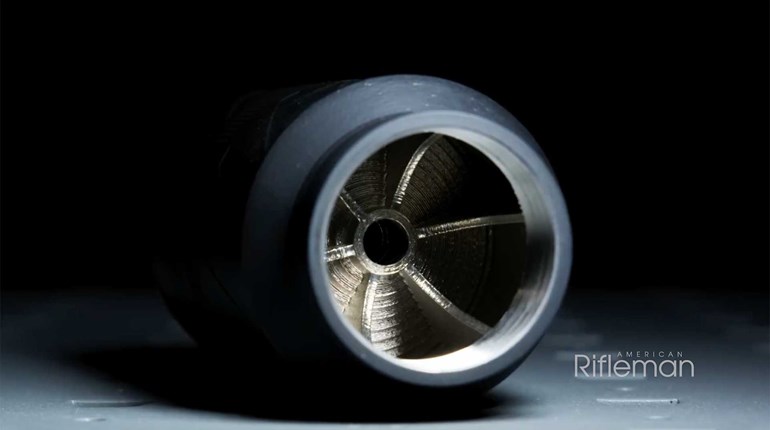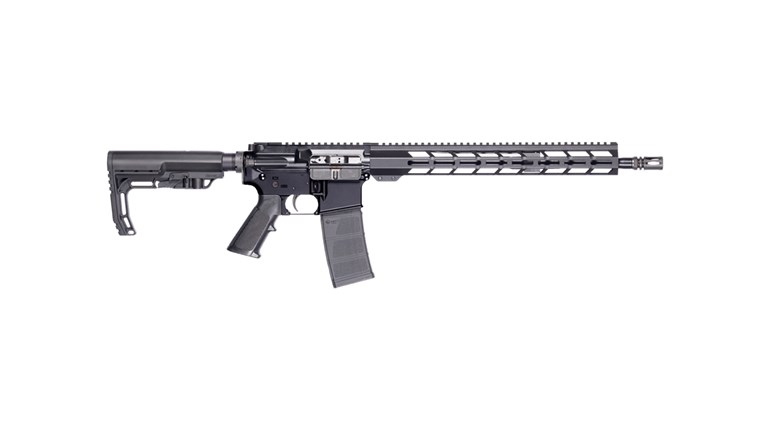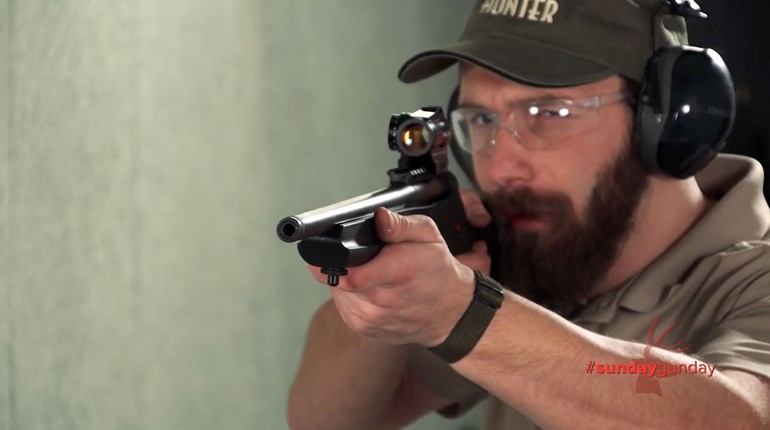
Humans like to make things. Man, woman or child; creating stuff is human nature. Our ability to craft things is what sets us apart from all the other animals on this planet. Sure, some animals make nests or dens, but humans create all sorts of cool stuff. We take pride in our ability to create things as simple as a crayon-colored picture and as complex as a skyscraper.
When I was in my teens, muzzleloading rifle kits were very popular. It was cool to build a gun and then shoot or even hunt with it. The newest, most modern version of those kit guns is the AR. The AR-15 and its variants have become extremely popular in the U.S. Why? They’re reliable, efficient, infinitely versatile and the ultimate kit gun.
A primary design feature of the AR-15 is its modular construction. Sport shooters recognized this modularity and it wasn’t long before a wide selection of aftermarket parts was available for the AR—parts capable of turning the platform into a rifle suitable for almost any endeavor.
Another virtue of the AR is its light recoil. This is partly due to its gas-impingement recoil system, and partly due to the .223 Remington cartridge for which it is commonly chambered. Four years ago I was struggling to find a rifle for my seven-year-old son’s first deer hunt. I noticed my AR leaning in the corner with its adjustable stock fully collapsed. That’s when it hit me that the rifle would fit him perfectly. He practiced with the AR for two days and took a deer with it on Christmas Eve.
Today the AR is available in a variety of cartridges and configurations, but not just in a completed package. A new industry has developed around the AR kit gun. An AR is made up of about 100 parts, depending on the configuration you choose. About half of those parts are common between all ARs. The variations in the other half are what allow you to personalize the rifle to suit your needs.
Assembling 100 parts might seem to be a daunting task, but when you think about it most model car or airplane kits have just as many parts. And, in reality, you can purchase many AR components pre-assembled. What the novice will need before he or she begins is instructions, and some responsible adult assistance. Unlike model airplane kits, AR parts or kits do not come with directions.
For over 70 years Brownells has been the go-to place for firearm parts and gunsmithing tools. About four years ago, Brownells developed a website, www.AR15builder.com. As a companion to this portal where you can virtually assemble your AR-15 dream gun, Brownells put together a set of videos and instructions on how to do it. Just go to the Brownells web site and click on the banner, “How to Build an AR-15.”
As cool as these videos are, some folks like an instruction book when working on a project like this. Brownells offers several books such as The Complete AR 15 Assembly Guide and Build Your Own AR 15. Both will walk you through the process step by step. They also offer a DVD of the instruction videos available on their web site.
Depending on the level of assembly you might want to attempt, some special tools can be a big help too. Brownells has taken the complexity out of trying to decide what tools you need. They have put together what they call the AR15 Critical Tool Kit. It contains the primary essential tools you need to assemble an AR-15.
Essentially, an AR has two main components: the upper and lower receiver. The lower receiver is a serial numbered item. It is, per the BATFE (Bureau of Alcohol, Tobacco, Firearms and Explosives), a firearm—and must be purchased or transferred as such. The upper receiver is just a collection of parts containing a barrel. You can purchase an upper receiver through the mail and have it shipped right to your door.
You can have one lower receiver with multiple uppers, configured for different uses. You might have one upper receiver strictly for plinking and fun, another for hunting deer, a separate upper for varmints or predators, another for competition and even one chambered for the .22 Long Rifle cartridge. That incredible versatility is the beauty of the AR platform. (PSE even makes a crossbow upper receiver!)
By using the Brownells AR15builder.com website, you can configure your build one part at a time. The application catalogs your parts and you can order a complete AR, or just parts to convert or customize your current AR. Or, you can save your configuration and order parts as you save the money. You can order a completed upper and lower receivers, or kits to assemble a complete upper and/or lower receiver.
A number of manufacturers offer upper and lower receivers and separate parts. Last year, I ordered a completed upper receiver, a lower receiver and a lower receiver parts kit from Del-Ton. Total cost; $670. In one evening my son (who was 10 at the time) and I assembled the complete gun and we were shooting it the next day. It shot great too, averaging about 1.25 inches with five different loads from Black Hills with bullets ranging in weight from 40 to 69 grains.
Assembling an AR kit is a fun project and can include about any family member, depending on your parents’ judgment. Remember, building an AR is not just about putting parts together. Half the fun is selecting the different parts such as the grip, stock and handguard you want. The AR is the only rifle that you can custom build, to suit your needs, right on your kitchen table, in one afternoon. If you’re a hunter, you can use that AR to put some savory tasting food on that same table this fall.
One thing’s for sure, few things in the world of guns are as fulfilling as building a rifle and then using it to put meat in the freezer, win a shooting match or just to have fun with on the range.
Tips on Building an AR at Home
Larry Weeks with Brownells believes most people are customizing ARs as opposed to building them from scratch. They may have an AR they want to modernize or configure for a specific purpose. So, they build up a new upper receiver and/or modify the lower. This is a great way to learn how to build an AR because you get to take it apart first. Likely, you’ll have so much fun you’ll end up starting a new project gun from scratch.
For beginners, I’d recommend starting with a completed upper receiver, a stripped lower receiver and a lower receiver parts kit. If small adults or youngsters will be shooting the rifle, a collapsible stock is the way to go. If you want to hunt deer or shoot at longer ranges, select an upper receiver with a barrel that has a 1 in 9 or faster twist so that it will stabilize heavier bullets.
Most AR factory or mil-spec triggers have a heavy and rough pull. This is not a good idea with any firearm. Unless you’re going to let a qualified gunsmith perform a trigger job, an aftermarket drop-in trigger is the smart way to go. Not only will it make the shooting part more enjoyable, they are much easier to install.
Unless you want to build a rifle that looks like an original M16, I would also suggest avoiding upper receivers with a fixed carry handle and front sight that is integral to the barrel. Fixed carry handles make it hard to mount optics, and fixed front sights obstruct the view through optics unless they are mounted on a carry handle. The flat-top upper receiver, with a full-length, rail-type, handguard or short piece of rail on the gas block, makes for a much more versatile design that will allow small- and large-bodied shooters to better use the open sights or optics you select.
Finally, don’t start the project without instructions. The books mentioned are excellent sources and Brownells has the information you need for free right on their website. If these sources do not answer the questions you have, find a qualified gunsmith to sort out your problems.
Sources for AR Parts
Brownells: www.brownells.com (www.ar15builder.com); (800) 741-0015
DEL-TON, www.del-ton.com, (910) 645-2172
LaRue Tactical, www.laruetactical.com, (512) 259-1585
Magpul, www.magpul.com, (877) 462-4785






































